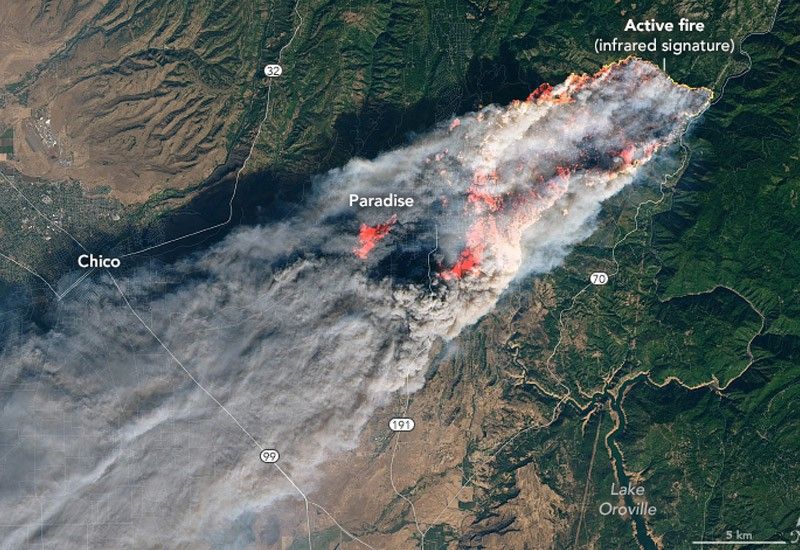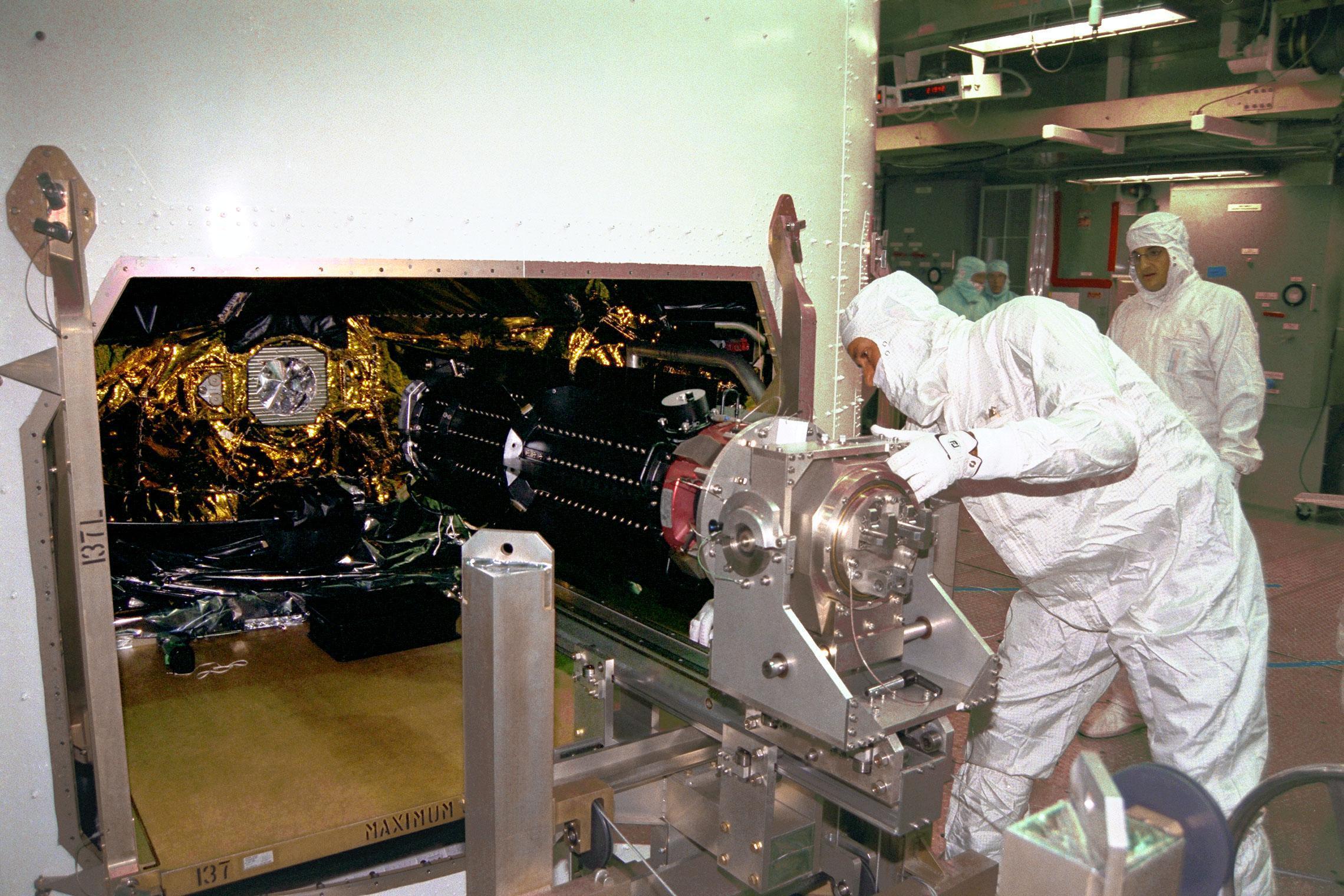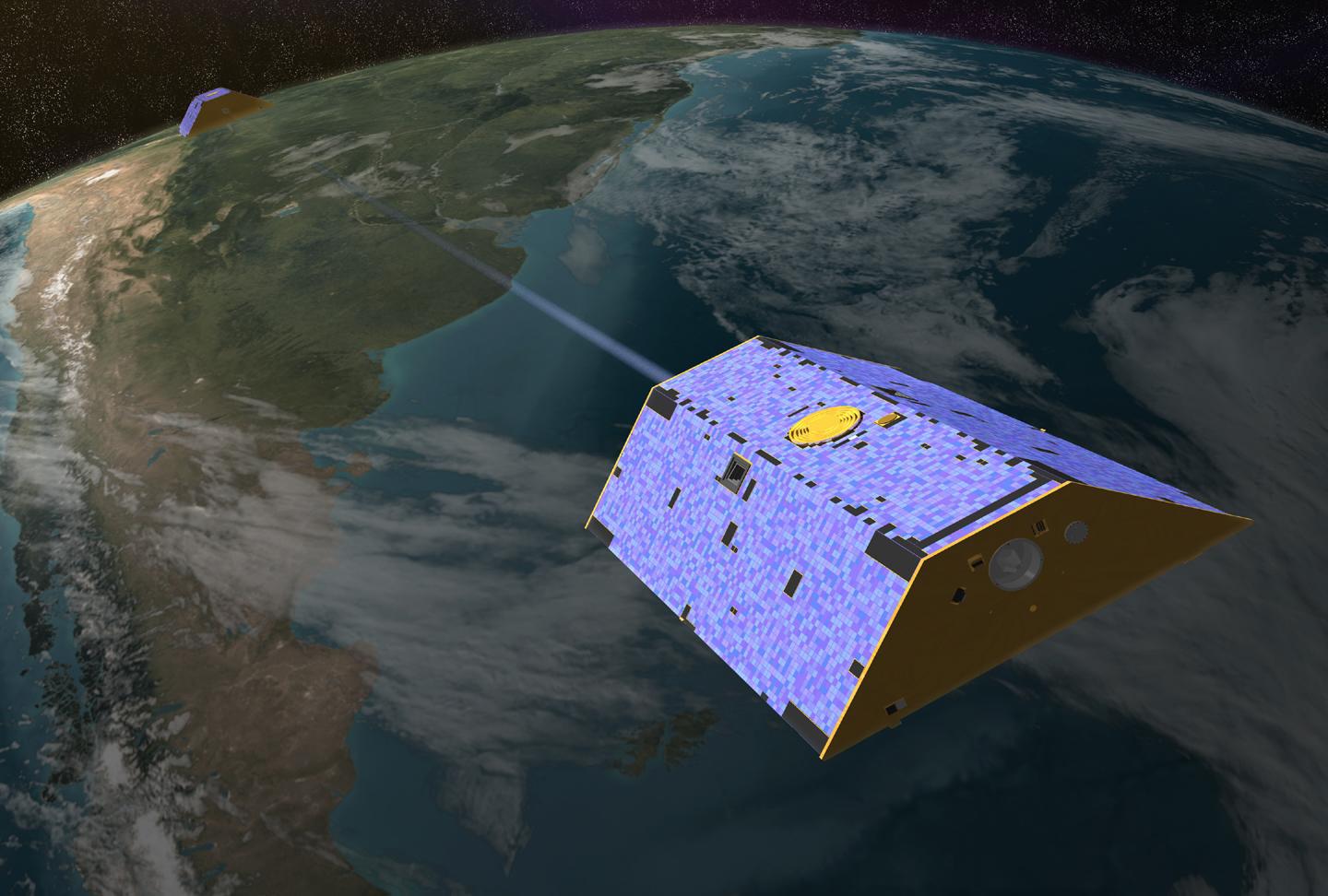When you hear news about ice loss from Greenland or Antarctica, an aquifer in California that is getting depleted, or a new explanation for a wobble in Earth’s rotation, you might not realize that all these findings may rely on data from one single mission: the U.S.-German Gravity Recovery and Climate Experiment (GRACE). GRACE data, collected from 2002 to 2017 while the mission was active, are still being used to improve our understanding of water in motion and its sometimes surprising effects on our planet. A new paper brings together newly calculated and existing summaries of the major results GRACE has generated, showcasing the breadth of topics the mission has illuminated over the years.
How Measuring Gravity Reveals Moving Water
GRACE and its successor, GRACE Follow-On, were designed to measure changes in gravitational pull that result from changes in mass on Earth. More than 99 percent of Earth’s mean gravitational pull does not change from one month to the next. That’s because it comes from the mass of the solid Earth itself – its surface and interior – and that rarely moves, or moves very slowly. Water, on the other hand, moves continually nearly everywhere: Snow falls, ocean currents flow, ice melts and so on. As the twin GRACE satellites orbited Earth, one closely following the other, the changes in mass below changed the distance between the two satellites very slightly. The record of these changes was analyzed to create monthly global maps of changes and redistribution of Earth’s mass near the surface.
“Water is an important sign of the health of the planet,” said Michael Watkins, the original GRACE project scientist and now director of NASA’s Jet Propulsion Laboratory (JPL) in Pasadena, California. “But water is hard to track in some forms — for example, polar ice or water stored deep underground. We need to understand those components as well as we understand water in its more easily assessable forms around the globe. That’s what GRACE has enabled us to do.” Scientists have used this increased knowledge of how water moves and is stored on Earth to understand global climate and how it is changing.
Byron Tapley, GRACE’s original principal investigator and the motivating force behind the mission (now retired from the University of Texas at Austin), is the lead author of the new paper. Titled “Contributions of GRACE to Understanding Climate Change” and published in the journal Nature Climate Change, it summarizes the latest results and new insights GRACE has enabled up to the present. The review, which covers aspects of the GRACE measurement technique, scientific breakthroughs and the relevance for climate service applications, was written by a distinguished team of GRACE experts. Most authors contributed to the GRACE mission even before it launched and have done groundbreaking work with its data.
“It was a challenge to write a representative eight-page review of GRACE achievements, which have been documented in over 3,000 peer-reviewed publications,” said Ingo Sasgen, GRACE scientist at the Alfred Wegener Institute’s Helmholtz Center for Polar and Marine Research in Bremerhaven, Germany, who coordinated the new paper. “We wanted to convey how unique the GRACE mission really was and how important its data are for us to understand how climate change affects water stored in the ocean, the ice and on the continents.” Here are a few examples.
Greenland and Antarctica. The paper updates previous studies to report that during the lifetime of the GRACE mission, Greenland lost 258 gigatons of ice per year, with the amount varying by more than 50% from year to year, to a large extent in response to temperatures during the summer months. “The Arctic is warming about twice as fast as the global average, with ice-mass loss and sea level rise being major consequences,” said Sasgen. “With GRACE we were able to budget each month the mass loss of glaciers and ice sheets around the world. These data have dramatically improved our understanding of the processes at play in these remote areas and their sensitivity to climate change.” Antarctica lost 137 gigatons per year on average, but the annual rate of loss varied by more than 150%, mainly due to fluctuations in snowfall. GRACE also found that these large fluctuations mostly occur in West Antarctica and correlate well with El Niño events, which affect how much precipitation reaches the continent.
Changes in water storage on land. GRACE has revealed that less water is now being stored naturally in mid-latitude land regions (that is, these regions are getting less precipitation and are becoming drier) and more is being stored in high- and low-latitude regions (that is, those regions are getting wetter). Climate models have long predicted that global climate change will bring about this trend, so the observations provide an important early confirmation of the models.
Sea level rise. The sea level rose more than 1.5 inches (3.7 centimeters) per decade on average over the globe from 2005 to 2016. There are two main causes for this change: runoff from melting ice sheets and glaciers, and expansion of the ocean water itself as it warms. Besides monitoring changes in the ice sheets and glaciers, GRACE could detect how much sea level rise was due to water formerly locked in ice on land being added to the ocean. The data show that this source increased throughout the mission and is currently responsible for about two-thirds of sea level rise.
“GRACE provided a paradigm shift in our view of how the oceans, atmosphere and land surface components interact,” said Tapley. “As an example, GRACE showed that the water leaving the polar ice caps is equal to the increase in water mass in the oceans, giving confirmation of this important measurement’s use in assessing ocean heat storage.”
Besides its value to research, Tapley pointed out, “GRACE is also an important asset for assessing the state of freshwater and assisting in managing it.” To improve flood forecasts for Europe, the European Gravity Service for Improved Emergency Management uses GRACE data to look at soil saturation levels weeks before flood season. Researchers have found that knowledge of unusually high levels of underground water storage can increase the lead time on warnings of peak river flooding by up to six weeks. In situations where freshwater is scarce, GRACE data support the U.S. Drought Monitor, which tracks drought across the United States and its territories and is widely used by managers at federal and state levels.
GRACE’s value to the scientific community was recognized within its first two years of operation, and the community strongly recommended that the mission be continued without major data gaps. To accomplish that, NASA and the German Research Centre for Geosciences (GFZ) launched a successor, GRACE Follow-On, in May 2018. GRACE-FO has completed all of its checkout phases and will soon begin releasing monthly maps of mass changes on Earth. “GRACE-FO allows us to continue the revolutionary legacy of GRACE,” Watkins said. “There are sure to be more unexpected and innovative findings ahead.”
GRACE was implemented as a joint mission of NASA and the German Aerospace Center. GRACE was the first principal-investigator-led mission implemented under the Earth System Pathfinder Program. The implementing team included the University of Texas at Austin, JPL and the GFZ. JPL managed the implementation and operations for NASA’s Science Mission Directorate in Washington. Caltech in Pasadena manages JPL for NASA.
Esprit Smith
Jet Propulsion Laboratory, Pasadena, California
818-354-4269
Esprit.Smith@jpl.nasa.gov
Written by Carol Rasmussen
NASA’s Earth Science News Team
2019-087


























